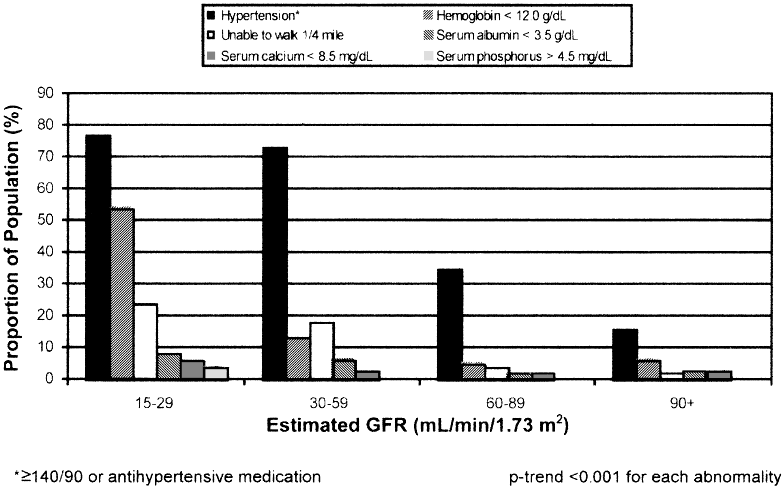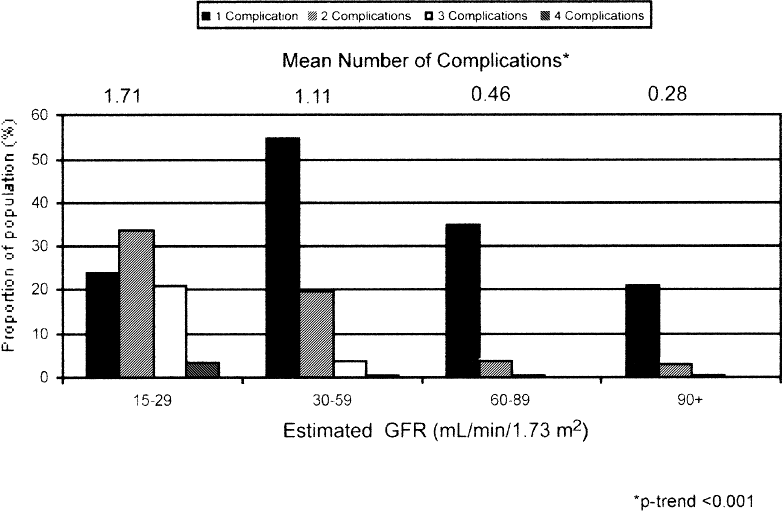NKF KDOQI GUIDELINES
KDOQI Clinical Practice Guidelines for Chronic Kidney Disease: Evaluation, Classification, and Stratification
PART 6. ASSOCIATION OF LEVEL OF GFR WITH COMPLICATIONS IN ADULTS
MANY OF THE complications of chronic kidney disease can be prevented or delayed by early detection and treatment. The goal of Part 6 is to review the association of the level of GFR with complications of chronic kidney disease to determine the stage of chronic kidney disease when complications appear. As described in Appendix 1, Table 153, the Work Group searched for cross-sectional studies that related manifestations of complications and the level of kidney function. Data from NHANES III were also analyzed, as described in Appendix 2.
Because of different manifestations of complications of chronic kidney disease in children, especially in growth and development, the Work Group limited the scope of the review of evidence to adults. A separate Work Group will need to address this issue in children.
The Work Group did not attempt to review the evidence on the evaluation and management of complications of chronic kidney disease. This is the subject of past and forthcoming clinical practice guidelines by the National Kidney Foundation and other groups, which are referenced in the text.
Representative findings are shown by stage of chronic kidney disease in Figs 15 and 16. Figure 15 shows a higher prevalence of each complication at lower GFR.
Figure 15 |
Estimated prevalence of selected complications, by category of estimated GFR, among participants age ≥ 20 years in NHANES III, 1988 to 1994. These estimates are not adjusted for age, the mean of which is 33 years higher at an estimated GFR of 15 to 29 mL/min/1.73 m2 than at an estimated GFR of ≥ 90 mL/min/1.73 m2. |

|
Figure 16 |
Estimated distribution of the number of complications, by category of estimated GFR among participants age ≥ 20 years in NHANES III, 1988 to 1994. These estimates are not adjusted for age, the mean of which is 33 years higher at an estimated GFR of 15 to 29 mL/min/1.73 m2 than at an estimated GFR of ≥ 90 mL/min/1.73 m2. |

|
Figure 16 shows a larger mean number of complications per person and higher prevalence of multiple complications at lower GFR. These and other findings support the classification of stages of chronic kidney disease and are discussed in detail in Guidelines 7 through 12.

